33 bizarre and wonderful things about Brazil I wish I'd known before going to Rio Carnival
Although Rio Carnival officially kicks off on Friday February 9, the warm-up began back in January and people have been partying for weeks.

I did my first carnival in 2010, and have been back for more since. If you're doing carnival for the first time, be prepared for the early starts. Some of the best "blocos" — or street parties — start at 7 a.m. and everyone is ready to go, drink in hand.

The blocos look like this, complete with huge shuddering sound systems.

Despite what you might expect, most carnival-goers are not actually dressed like this.
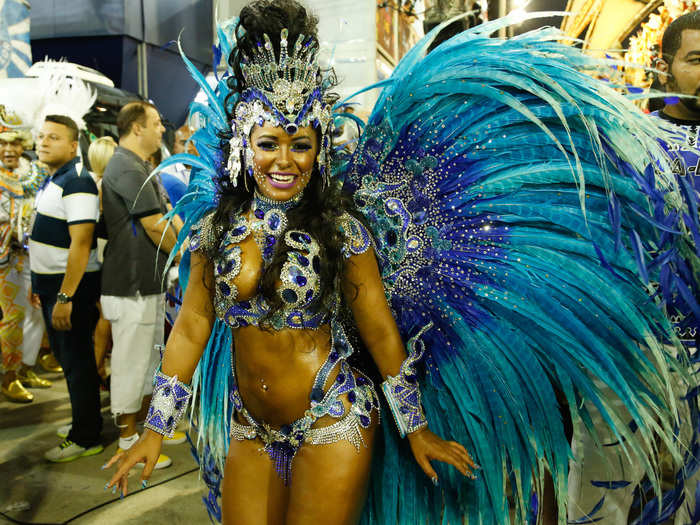
The feathered outfits can mostly be found at the Sambadrome, where the official parade of the samba schools happens. But this isn't the best bit of Rio carnival.
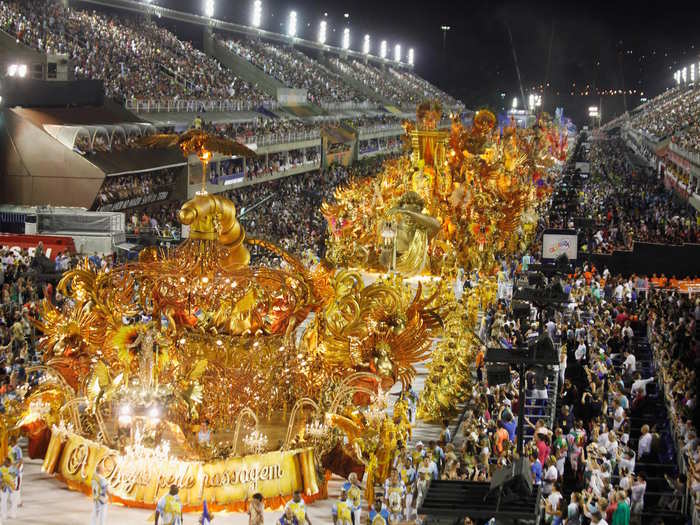
The Sambadrome itself, which was designed by Niemeyer, is a concrete structure through which the floats pass through with spectators on either side. The processions happen each night of the official carnival days.
It's tipped by many as the "highlight," but while the Sambadrome is clearly a great spectacle and what most of the outside world sees of the celebration, it doesn't represent the whole Carnival experience for most "Cariocas" (people from Rio).
Tickets can get very expensive to see the best samba schools, and I found the experience a little repetitive.
Learning samba is as hard as it looks. It's understandably tempting to give it a go while you're visiting, but unless you're really gifted, the chances are you're doing it all wrong.
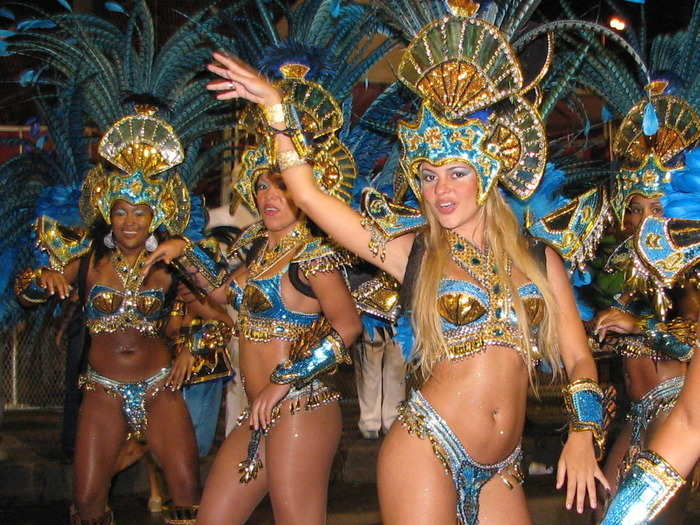
The dancers in the photo above told the photographer that their "platform sandals" actually prevent them from slipping over and injuring themselves while dancing the samba which has some incredibly quick steps.
Fancy dress — or "fantasia," as it's called in Brazil — is still important, but with a little eccentric twist.

Brazilians are known for their creativity and sense of humour, and this is reflected in many of the carnival outfits, such as these ones in Bloco Céu Na Terra, which happens in the Santa Teresa neighbourhood in Rio de Janeiro.

This year over 450 blocos will parade all across the city. There's one to suit every fancy dress or music taste. There's even one dedicated to Super Mario.

If you're starting early and want to last, it's advisable to chill in the evenings, unless you're headed off to the Sambadrome.

Before you do Rio Carnival, it's worth knowing a few things about Carioca culture, too. Brazilian beer is weak, which is actually a blessing in disguise during Carnival, when most people are drinking it all day long.
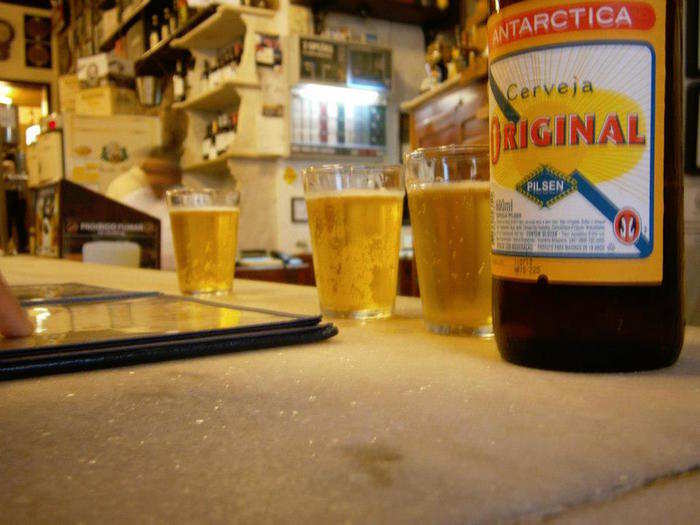
On the beach you drink cans, sometimes with a little polystyrene cooler around it to keep it chilled. While in a bar you usually buy one big bottle and share in small glasses, again to keep it ice cold.
This is what a typical snack looks like in Brazil: deep fried savoury "salgados" with a fizzy drink. Brazilians love to snack all day long, especially on the beach. There are some very specific rules about how you consume these items, though.
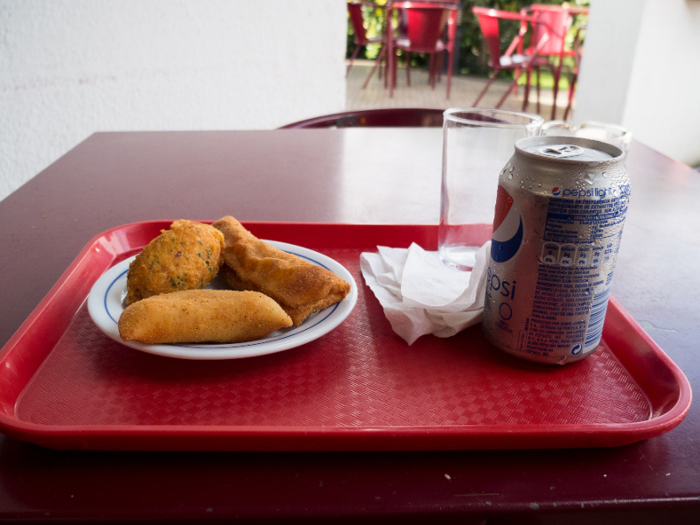
You NEVER hold your salgado with your bare hand. It always needs to be eaten wrapped in a napkin. And you always drink a can with a straw, unless it's beer of course.

I learned this the hard way a few days into arriving in Brazil. People are genuinely horrified if you don't follow these rules — it's a hygiene thing.
In Rio, your choice of beach says a lot about you. Copacabana and its wide white sandy beaches are truly breathtaking, but it's touristy...

...And by night it gets a little seedy.

Posto 8, below, a section on Ipanema beach, has historically been the LGBTQ-friendly area.

A little further up near Posto 9 is my favourite spot in Ipanema, popular with the young crowd. The iconic backdrop of the twin mountains, Dois Irmãos, the glistening turquoise water, and a clear sky makes for paradise on a blazing hot 40 degree summer day in Rio.

Don't be intimidated, though, if the beach looks more like this. If it's a hot day, people pack on to the beach and form a sea of red parasols. It's completely acceptable to use up every inch of sand and shimmy up close to your neighbours. It's a good opportunity to make friends.

In Brazil you NEVER take a towel to the beach, though. Even the tourists learn this pretty soon. You need to purchase a "canga" to lie on, which can double up as a sarong later. The Brazilian flag is a popular choice.

Some people prefer to rent a folding chair on the beach, and locals always face the sun.
Brazilians take their football very seriously even down at the beach. Men and women play keepie uppies at the front of the beach and it makes for great people watching. Be warned, though — if you want to join you'd better have skills.

The sea is extremely rough in Rio, even in the shallows. Countless grown men and women get taken out by the current while they're in less than knee deep. As a foreigner, it's easy to lose your bikini or shorts, which is always a great source of entertainment for the locals.

On a hot day, the beach shower offers a safer way of cooling down.

Many men wear a sunga — speedo-like trunks — and red is a popular colour.

Women's beachwear is just as skimpy. It doesn't matter your age or size, everyone wears the same tiny bikini bottoms. And tan lines are desired rather than avoided. They're kind of like a status symbol.

You can buy literally anything at the beach, and you won't even have to get up from your seat. This means bikinis, cangas, beer, crisps, samosas, meat on a stick, and hot cheese on a stick — I particularly recommend the latter.
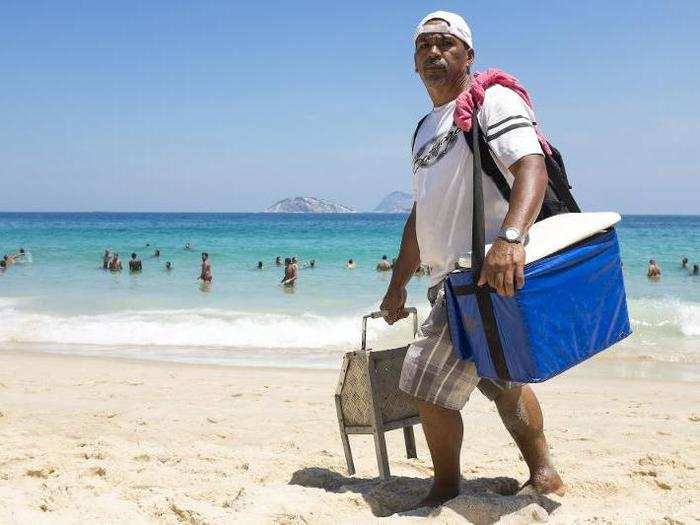
You'll be told to avoid the shrimp skewers, for obvious reasons.
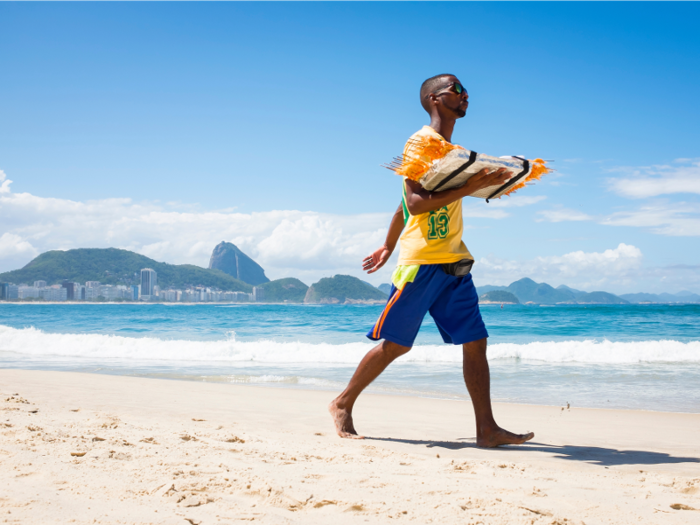
A shrimp, or "camarão," is also what they'll call you if you get a sunburn — and they'll be happy to remind you of it at any opportunity.
The best thing you can buy on the beach is a "caipi" — Brazil's speciality cocktail.

Lots of foreigners can’t cope with the extreme amounts of sugar in a regular Caipirinha made with cachaça — and the resulting "ressaca" (hangover) is pretty awful.
A safer alternative is a "Caipivodka," which, as the name suggests, uses vodka instead. The classic lime-based caipi is not necessarily the best one — strawberry and passion fruit flavours are my favourites, but you can pretty much order one made of any fruit.
Still, even if you stick to the caipivodkas, the hangover in the heat can be pretty brutal and there are some situations that only an ice cold "Água de coco" — or coconut water — can fix. These come in very handy during Carnival, and can offer a new lease of life when you thought you couldn't do one more day of partying.
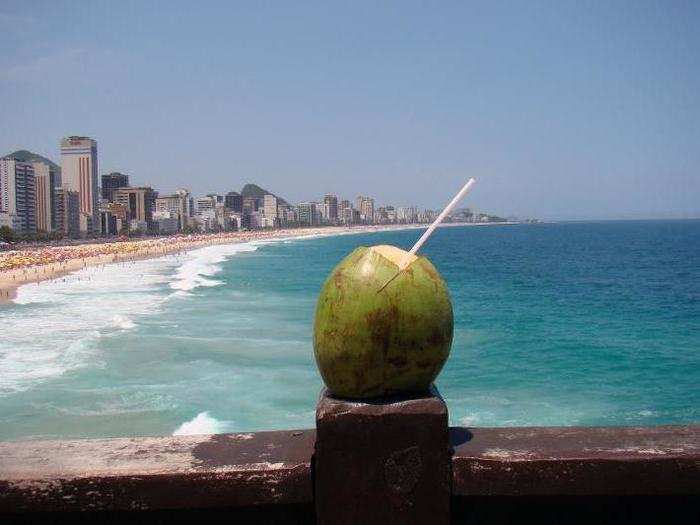
Young couples apparently often break up about a month before Carnival and get back together about a month later. It presumably avoids any complications.

Whether or not it is true, it would make sense in theory, as there's lots of kissing during Carnival — but it's all pretty light-hearted.

"Love motels" are also a thing in Brazil. They provide a convenient place for couples — most of whom still live with their parents — to go for quality time.

In Brazil, you should always make time for a "saideira," or "one for the road." This is a "chopp," a draught beer which is by far the best way to drink the local stuff. Knowing that word will get you far.
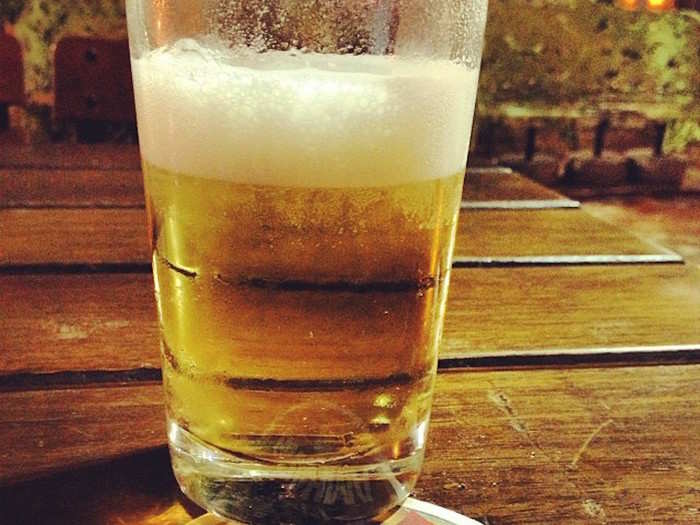
Leaving Brazil, and especially Rio, is always hard. A notoriously difficult word to translate, "saudade" roughly equates to a profound longing or nostalgia for someone or something — and once you've left you're bound to feel a pang of it.

Popular Right Now
Popular Keywords
Advertisement